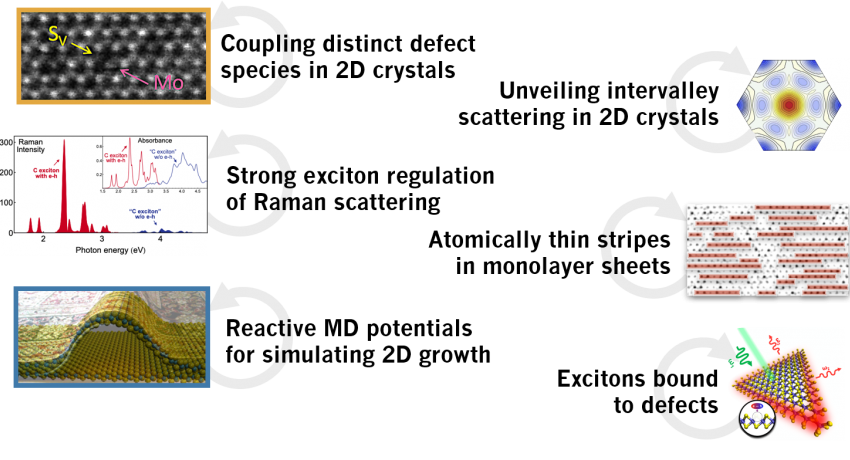What Has Been Achieved:
A tightly iterated closed loop between experiment and theory in the NSF Materials Innovation Platform Two Dimensional Crystal Consortium at Penn State is revealing new insights into the growth and properties of 2D materials. This includes groundbreaking work on the interpretation of optical probes – a key area for emerging data-centric approaches of 2D systems, the development of leading interatomic potentials to describe complex growth processes, and new ways to control the atomic-level structure of these systems.
Importance of Achievement:
These new insights and capabilities are now being made available to the community through the MIP platform, including new hyper spectral optical imaging modalities in the 2DCC’s highly integrated vacuum environment (HIVE) and making use of the LiST Lifetime Sample Tracking data curation tool.
Unique Features of the MIP That Enabled Project:
Close iterative interaction between synthesis, characterization, and theory efforts.
Publications:
(from top left down each column):
Defect coupling:
A. Azizi, Y. Wang, G. Stone, A. L. Elias, Z. Lin, M. Terrones, V. H. Crespi, and N. Alem, “Defect Coupling and Sub-Angstrom Structural Distortions in W1–xMoxS2Monolayers”, Nano Lett. 17, 2802 (2017).
Exciton regulation:
Y. Wang, B. R. Carvalho, and V. H. Crespi, “Strong exciton regulation of Raman scattering in monolayer MoS2”, Phys. Rev. B 98, 161405(R).
MD Potentials:
Ostadhossein, A., Rahnamoun, A., Wang, Y., Zhao, P., Zhang, S., Crespi, V.H. and van Duin, A.C.T. (2017) ReaxFF Reactive Force-Field Study of Molybdenum Disulfide (MoS2). Journal of Physical Chemistry Letters 8, 631–640.
Intervalley:
B. R. Carvalho, Y. Wang, S. Mignuzzi, D. Roy, M. Terrones, C. Fantini, V. H. Crespi, L. M. Malard, and M. A. Pimenta, “Intervalley scattering by acoustic phonons in two-dimensional MoS2 revealed by double-resonance Raman spectroscopy”, Nat. Commun. 8, 14670 (2017).
Stripes:
Nano Lett., 2016, 16, 6982–6987
Exciton defect:
V. Carozo, Y. Wang, K. Fujisawa, B. R. Carvalho, A. McCreary, S. Feng, Z. Lin, C. Zhou, N. Perea-López, A. L. Elías, B. Kabius, V. H. Crespi, and M. Terrones, “Optical identification of sulfur vacancies: Bound excitons at the edges of monolayer tungsten disulfide”, Sci. Adv. 3, e1602813 (2017).
Credits/Names: Alem, Azizi, Carozo, Carvalho, Crespi, Elias, Fujisawa, Kabius, Malard, Mignuzzi, Ostadhossein, Perea-López, Pimenta, Redwing, Terrones, van Duin, Wang, Penn State
Download PDF Version: MIP -2DCC-1539916_Closing Loop Materials Genome.pdf
Year of Research Highlight: 2018
Select a Highlight Type: In-House Research Highlight
